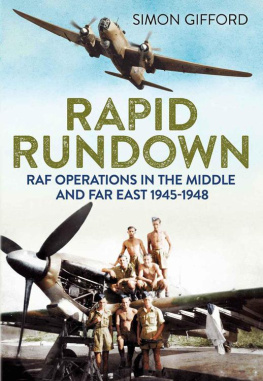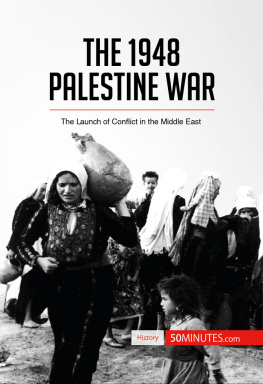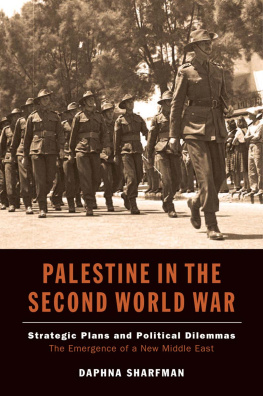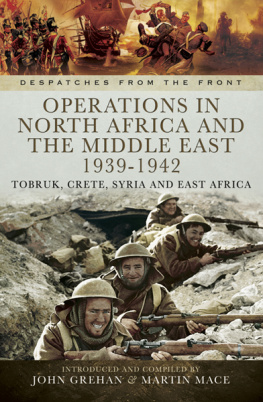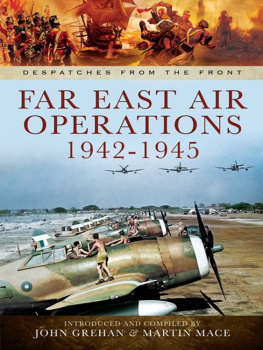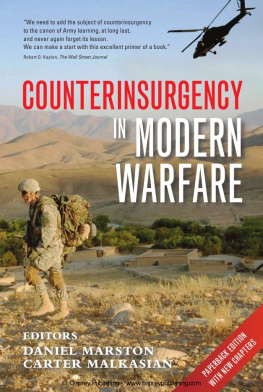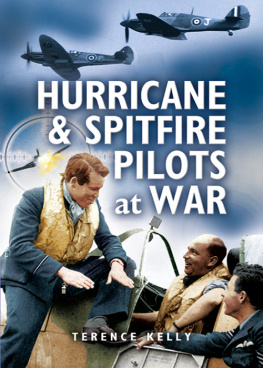

Fonthill Media Language Policy
Fonthill Media publishes in the international English language market. One language
edition is published worldwide. As there are minor differences in spelling and presentation,
especially with regard to American English and British English, a policy is necessary to
define which form of English to use. The Fonthill Policy is to use the form of English native
to the author. Simon Gifford was born and educated in the UK and now lives in Scotland
therefore British English has been adopted in this publication.
Fonthill Media Limited
Fonthill Media LLC
www.fonthillmedia.com
First published in the United Kingdom and the United States of America 2014
British Library Cataloguing in Publication Data:
A catalogue record for this book is available from the British Library
Copyright Simon Gifford 2014
ISBN 978-1-78155-341-1
The right of Simon Gifford to be identified as the author of this work has been asserted
by him in accordance with the Copyright, Designs and Patents Act 1988.
All rights reserved. No part of this publication may be reproduced, stored in a retrieval
system or transmitted in any form or by any means, electronic, mechanical, photocopying,
recording or otherwise, without prior permission in writing from Fonthill Media Limited
Typeset in 10.5pt on 13pt Sabon
Printed and bound in England
Contents
Introduction
The end of the war in the Far East in August 1945 was met by the men of the RAF with a sense of relief, but also presented the service with a series of additional challenges, which it was required to deal with over the next three years. Compared to the dramatic events of the war years, this period of RAF history is often overlooked and frequently poorly documented, even in official records. This book tries to provide the reader with a better understanding of the important role the RAF played in the Middle and Far East regions in the three-year period after the end of the war, and prior to the initial events of the Cold War period, such as the Berlin airlift, that would see the strength of the RAF increase to meet the communist threat.
In the Middle East region the RAF was required to protect the crucial Suez Canal zone, which linked Britain to India and the Empire beyond. Shortly after VE-day, the majority of the RAFs strength in the area was deployed to Palestine, which was considered a stable and safe location. However, this was quickly to change with an attempted upsurge of Jewish immigration into the country, as the many displaced Jews around Europe attempted to find a new home in Palestine. This was in direct conflict with the British Governments stated aim to limit immigration to Palestine and so the RAF was directed to aid the Navy in intercepting the ships bringing the immigrants towards Palestine. This in turn led to an increase in terrorism by various Jewish organisations, some of which was directed against RAF assets and personnel. Elsewhere, RAF squadrons were directed to return to a role of air-policing, in a similar manner to that carried out by biplanes in the between wars period. The difference was in the equipment used, with rocket-armed Mosquito and Tempest aircraft proving far more devastating in their now role.
In the Far East, the pressing task at the conclusion of the war was to find and bring succour to the large number of prisoners-of-war and civilian internees who had been held under inhuman conditions by the Japanese. This task would see the RAF operating beyond the bounds of the empire, with RAF aircraft flying over Siam, French Indo-China, Netherlands East Indies, and even over Japan itself. The mission in the Netherlands East Indies was complicated by the local Indonesian populations desire for independence from their colonial Dutch masters, and this would lead to British and Commonwealth forces effectively being forced to fight another small war. During this conflict, RAF fighters and transports played a crucial role in turning the tide of a battle that could easily have seen British forces suffer a humiliating defeat. The call for independence was also sounding through the Empire, and the RAF found itself involved in the withdrawal of British forces from both India and Burma in the years following the war. Even in the jewel of the Empire, Malaya, all was not well, and in 1948 the RAF was called upon to fly the first strike missions of a campaign against communist terrorists, who were determined to seek the removal of the British from the country.
Of note, through the period covered by the book, is that the aircraft that were being operated in the Middle and Far East regions at this time were all types that had been flown during the war. In certain cases, aircraft that had illustrious wartime careers such as the Lancaster and Mosquito proved to not be entirely suitable for operations in the heat and humidity of the Far East. In particular, the failure of the Mosquitos wooden structure to cope with the varied conditions would see its rapid replacement, ironically by the earlier generation Beaufighter in the Far East. It should be noted that in the period after the war, and indeed for many years after, the Middle and Far East regions were well down the priority list for modern equipment, with the first few Vampire jet fighters only just reaching squadron service by mid-1948.
In writing this book I have been helped by many individuals and organisations. I would, in particular, like to thank all the ex-RAF air and ground crew, whose varied accounts of RAF life add to the narrative and provide a bit more detail than could just be found in official records. I would also like to thank the staff of the National Archives, the Imperial War Museum and the research staff at the RAF Museum for their efforts in searching for and copying files and records of RAF units. In addition, I should put on record my thanks to the team at Fonthill for taking on this project on a subject a bit off the beaten track. Finally, I would also like to say thanks to my wife, Elaine, and daughter, Laura, for their patience and support while I spent so much time reading and writing about aeroplanes.
1
Fighters over Palestine 19451948
An uneasy peace had settled over Palestine during the early war years following the declaration of a truce by the Irgun terrorist organisation at the outbreak of the war. Recognising the greater danger to the Jewish peoples presented by the Nazi regime, the Irgun and Haganah organisations of the Zionist movement in Palestine decided to actively cooperate with the Allied forces. Despite this, the Haganah continued to attempt to smuggle immigrants into the country using whatever means possible and both organisations recruited and trained more activists. Elements of the Irgun, dismayed at the cessation of the struggle for a Jewish state, argued for a resumption of the campaign against British rule, eventually splitting off under the leadership of Avraham Stern, under whose name the organisation was known. In support of the allies, many of the organisations members were originally trained in Palestine to operate and fight behind Axis lines. Unfortunately, this high quality training would be turned against the British in later years. Further to the moves made by the Jewish population, the Arab leadership in Palestine, wary of antagonising Britain following the Arab revolts of the late 1930s, pledged their loyalty to Britain.
Next page
